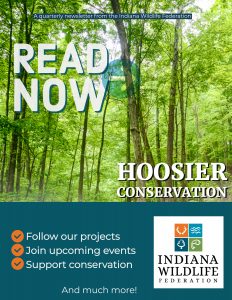February 5, 2019
Public Comments Processing
Attention: National Leader for Wetland and Highly Erodible Land Conservation
USDA, Natural Resources Conservation Service
1400 Independence Avenue SW,
Washington, DC 20250
Re: Docket Number NRCS-2018-0010; Comments on the NRCS Interim Rule on Highly Erodible Land and Wetland Conservation (7 CFR Part 12)
The undersigned organizations, representing conservation, water, and agriculture organizations, write to express our concerns about the impacts of the interim final rule on wetland determinations. In particular, we are concerned that this rule promotes the exclusion of seasonal wetlands from the Farm Bill’s wetland conservation compliance safeguards, encouraging additional wetland drainage in the Prairie Pothole Region and beyond. Given these concerns, we urge USDA to withdraw the interim final rule and instead propose a rule that promotes accurate wetland determinations that include all seasonal wetlands and one that is subject to robust environmental review and public comment.
Over its 30 year history, conservation compliance has saved billions of tons of soil from erosion and protected millions of wetland acres, resulting in healthier soil, better wildlife habitat, and cleaner rivers, lakes, and streams. It is critical that any actions that NRCS takes related to wetland conservation compliance are done in a manner that ensures that the legacy of conservation compliance is not diminished. Unfortunately, this interim final rule undermines protections for seasonal wetlands, encouraging wetland drainage and ignores the letter and spirit of the Farm Bill wetland conservation compliance provisions. Our major concerns are that:
? The rule systematically excludes seasonal wetlands from wetland maps that form the basis for producer compliance. Of particular concern is the rule’s certification of old (pre-1996) wetland determinations that have consistently excluded seasonal wetlands, have been shown to underidentify wetlands by as much as 75%, and that were for years considered too inaccurate to be used.
? The rule relies on aerial imagery from the hottest time of the year (July/August), when many seasonal wetlands have dried out. Seasonal wetlands fill early in the spring, which is when they provide their most important flood storage and wildlife benefits, particularly for migrating and nesting waterfowl. For example, an analysis of three decades worth of U.S. Fish and Wildlife Service waterfowl and pond surveys in eastern South Dakota, the heart of the Prairie Pothole region, found that the number of wetland basins containing water that show up in July surveys was 73% lower than in May surveys. Any NRCS wetland determination rule should account for the use of summer imagery and promote the use of and investments in accurate spring imagery.
? The rule relies on precipitation data from a historically dry period (1971-2000), further limiting the number and size of seasonal wetlands subject to the wetland conservation compliance requirements. Coupled with the mid-summer imagery, this focus on drier rather than wetter conditions significantly skews wetland maps towards excluding seasonal wetlands. Even more concerning is that there has been no scientific analysis of the impacts of using this outdated information.
? There has been inadequate analysis of the environmental impacts of the rule, including the potential for impacts on endangered species.
We thank you for the opportunity to provide input into this rulemaking, and for your consideration of the above comments. Given these concerns, we urge USDA to withdraw the interim final rule and instead propose a rule that promotes accurate wetland determinations that include all seasonal wetlands and one that is subject to robust environmental review and public comment.
Signed,
American Bird Conservancy
Apalachicola Riverkeeper
Audubon Chapter of Minneapolis
Bird Conservation Network
Center for a Sustainable Coast
Center for Food Safety
Chesapeake Wildlife Heritage
Chicago Audubon Society
Citizens Committee to Complete the Refuge
Clean River Alliance
Clean Water Action Committee on the Middle Fork
Conservation Coalition of Oklahoma
Defenders of Wildlife
Delta Chapter, Sierra Club (Louisiana)
Earthjustice
ECOAN
Endangered Habitats League
Environmental Law & Policy Center
Environmental Working Group
Florida Wildlife Federation
Food & Water Watch
Friends of Black Bayou, Inc.
Friends of Blackwater, Inc.
Friends of the Central Sands
Friends of the Santa Clara River
Georgia Wildlife Federation
Gulf Restoration Network
Illinois Council of Trout Unlimited
Illinois Division of the Izaak Walton League of America
Illinois Ornithological Society (IOS)
Indiana Sportsmen’s Roundtable
Indiana Wildlife Federation
Iowa Audubon
Iowa Natural Heritage Foundation
Izaak Walton League of America
Izaak Walton League of America – Indiana Division
Izaak Walton League of America – National Great Lakes Committee
Johns Hopkins Center for a Livable Future
Kansas Wildlife Federation
Kentucky Waterways Alliance
Lake Champlain Committee
Lake Erie Waterkeeper
Los Angeles Audubon Society
Louisiana Audubon Council
Maryland Ornithological Society
Minnesota Conservation Federation
Mississippi River Collaborative
Missouri Coalition for the Environment
Monongalia County, WV, Izaak Walton League of America
Montana Wildlife Federation
National Audubon Society
National Latino Farmers & Ranchers
National Sustainable Agriculture Coalition
National Wildlife Federation
Natural Resources Defense Council
North Dakota Wildlife Federation
NYC H20
Ohio River Foundation
Ohio Environmental Council
Prairie Rivers Network
River Network
Rural Coalition
Salem Audubon Society
Sierra Club
South Dakota Wildlife Federation
Southern Maryland Audubon Society
Southwestern Wisconsin Chapter, Izaak Walton League of America
Sycamore Audubon Society
Tennessee Clean Water Network
Tennessee Ornithological Society
The Institute for Agriculture and Trade Policy
The River Project
The Wetlands Initiative
Union of Concerned Scientists
Virginia Conservation Network
Waterkeeper Alliance
West Virginia Division, Izaak Walton League of America
Wild Farm Alliance
WildEarth Guardians
Winyah Rivers Alliance
Wisconsin Division, Izaak Walton League of America
World Wildlife Fund



